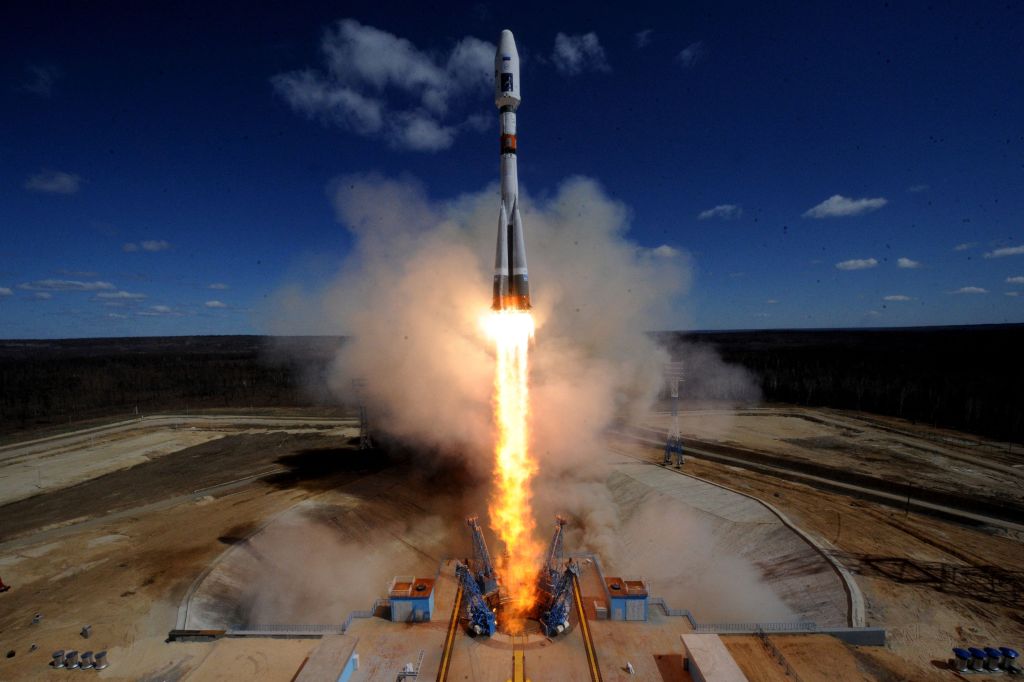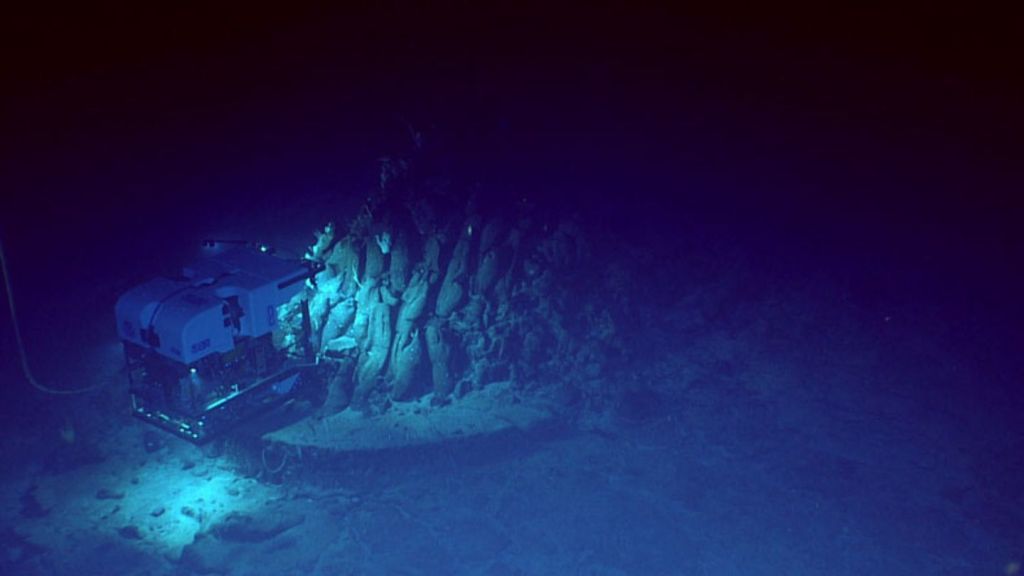Early Friday morning, as most Americans slept, scientists at the NASA Jet Propulsion Lab in California were gathered to watch — with a mix of pride and tears — as one of the most successful space exploration missions came to a fiery end.
Earl Maize, the program manager for NASA’s Cassini mission announced to the team of scientists, some who had been working on the mission for close to 30 years, “There may be a trickle of telemetry left, but … the signal from the spacecraft is gone and within the next 45 seconds, so will be the spacecraft.”
Videos by VICE
“This has been an incredible mission, an incredible spacecraft, and you’re all an incredible team. I’m going to call this the end of mission. Project manager, off the net.”
And with that, the Cassini spacecraft, that left Earth in 1997, plummeted into the planet it had been studying, as planned.
Here are six of the most amazing things we learned from the Cassini mission:
Saturn has even more moons than we thought it did
In 1997, when Cassini launched from Cape Canaveral, Florida, we only knew of 18 moons orbiting Saturn. Over the course of the mission, scientists identified 44 more moons, putting the total number of known moons at 62. Though most were discovered by satellite from Earth, Cassini discovered six of them.
Some are tiny, with a diameter of only a few miles; the largest moon, Titan, first discovered back in 1655 by Dutch astronomer Christiaan Huygens, is bigger than the planet Mercury.
Titan, Saturn’s largest moon, has a lot in common with Earth
Cassini revealed that Titan has lake and rivers — but it’s not water flowing through them. On Titan, “methane plays the role that water plays on Earth,” Linda Spilker, a NASA scientist and Cassini project specialist told VICE News. So instead of rain, the planet’s clouds release methane.
And Cassini discovered what scientists call “prebiotic chemistry” on Titan — a term for the conditions believed to be precursors for the development of organic life.
“The moon is essentially a frozen version of what the Earth was several billion years ago,” writes Andrew Coates, Professor of Physics and Deputy Director (Solar System) at UCL’s Mullard Space Science Laboratory who has been involved with Cassini for 28 years, in Business Insider.
Titan is also the second-largest moon in the solar system — second only to Jupiter’s Ganymede.
Cassini observed an enormous storm form and expand
Cassini was in Saturn’s orbit as the largest storm ever seen formed on Saturn. In 2010, it picked up steam in Saturn’s northern hemisphere and, over the course of the six churning months, grew to encircle the entire planet. The Cassini spacecraft also observed enormous temperature fluctuations, which sent temperatures in the planet’s stratosphere up 150 degrees Fahrenheit above normal, according to NASA.
We knew about big storms on Saturn before this one was observed — known as Great White Spots, they tend to pop up once a Saturnian year, which equates to about 30 Earth years. But the storms had never been observed up close by a satellite before Cassini, and the one it caught lasted longer than any other storm observed on Saturn.
There’s a hexagonal jet stream in Saturn’s polar region, and it looks crazy
Cassini was also able to capture images of an unusual storm that’s continuously brewing up at Saturn’s north pole. At its center is a hurricane with an eye about 50 times larger than the average hurricane on Earth, and the six-sided jet stream that surrounds it, known as “the hexagon,” has been there for “decades — and who knows, maybe centuries,” said Andrew Ingersoll, a member of Cassini’s imaging team, in a press release.
Thanks to Cassini, scientists were able to monitor the storm in different seasons, learning howits color shifted as the planet tilted and spring turned to summer. When Cassini first observed the hexagon in 2012, it was a shade of blue; in 2017, as the summer solstice approached, it was more of a yellow hue, likely due to exposure to the sun’s ultraviolet rays.
“We still don’t know why this six-sided jet stream maintains its six-sides,” Spilker told VICE News. “No other planets with atmospheres have this type of hexagonal jet stream.”
Enceladus, another of Saturn’s moons, might already be home to organic life
Cassini discovered a water ocean beneath a shell of ice on another one of Saturn’s moons, Enceladus. There are hydrothermal vents there, too — hot vents that spout nutrients out of the ocean’s floor. Some of the scientists involved in the Cassini mission are already itching to go back and explore the moon further.
The satellite discovered what Spilker said appeared to be “conditions that are right for habitability inside that ocean.” But Cassini wasn’t equipped with life detection instruments. So there may be life down there already — and some scientists say they’d love to go inspect the planet themselves — but we won’t know for sure until the next space mission heads to Saturn.
One theory about the origin of life on Earth is that it came from similar hydrothermal vents — and some scientists hope that further exploration of Enceladus might help reveal not only whether there’s life on the moon at all, but answers to questions about the origins of life on our own planet.
The discovery of the ocean, Curt Niebur, a Cassini program scientist, told reporters at a recent press conference “changed our idea that ocean worlds — like Earth and Europa — are rare in the universe,” he said.”
Saturn’s rings make new moons
That’s not a space station … it’s a moon! On April 15, 2013, Cassini photographed something protruding at the edge of Saturn’s outermost ring, and scientists think it might have been the formation of a new moon.
“We have not seen anything like this before,” said Carl Murray of Queen Mary University of London in a NASA statement. “We may be looking at the act of birth, where this object is just leaving the rings and heading off to be a moon in its own right.”
Scientists affectionately named the object they observed Peggy, after Murray’s mother-in-law. Since it was first spotted, Peggy appears to have collided with another object in Saturn’s ring and broken apart, but the tiny moon — or “moonlet,” as scientists call it — is still circling the planet.
Peggy’s formation, scientists hope, will help provide insight into how Saturn’s other moons formed — and may provide clues to planetary formation more broadly.
And those gaps in Saturn’s rings? They’re carved out by other small moonlets that orbit within them.
These small moons are a part of why Cassini had to crash into the planet it spent years studying in order to fulfill its mission. Had it been allowed to stay in orbit, scientists worries that it might have collided with one of Saturn’s moons, potentially damaging it. So to keep the Saturn’s moons pristine for future study, the scientists sling-shotted the spacecraft through Titan’s gravitational field and launched it into Saturn’s surface.
What’s next?
We’ve learned a lot in the course of the Cassini mission, but its orbit created at least as many questions as it answered. Scientists expect at least some of the mysteries will solved when the evidence collected by Cassini is analyzed (“We’re still busy unwinding our last grand finale data,” Spilker told VICE News).
But even as sadness mixed with pride while scientists watched Cassini plunge into Saturn’s atmosphere, some are already gearing up to go back. Proposals are already in the works to explore Enceladus and Titan, though no plans to return to have been finalized yet.




